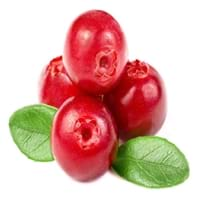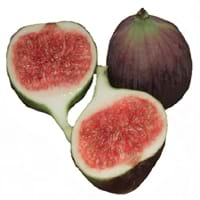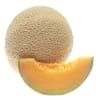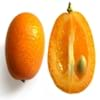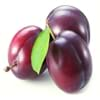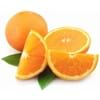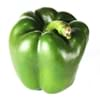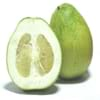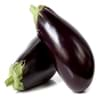Health Benefits
Cancer prevention, Heart care, Kidney stone treatment, Scurvy treatment, Ulcer prevention
Cancer prevention, Controls blood pressure, Heart care, Increase in haemoglobin, Prevents constipation, Prevents macular degeneration, Reduces nervous tension
General Benefits
Anti-inflammatory properties, Boosts immune system, Digestive aid, Fights against infections, Strengthens bones
Controls blood pressure, Helps in weight loss, Maintains healthy cholesterol level, Strengthens bones
Skin Benefits
Anti-aging benefits, Reduces wrinkles, Skin rejuvenation, Treatment of acne
Brightens and lightens complexion, Hydrates skin, Skin rejuvenation, Treatment of acne
Hair Benefits
Promotes longer and healthier hair, Protects hair, Treatment of dandruff
Good conditioner, Regulates hair growth, Softening mask
Allergy Symptoms
Anaphylaxis, Breathing difficulty, Itching, Skin rash, Swelling of mouth, tongue or lips
Abdominal pains, Anaphylaxis, Coughing, Headaches, Hives, Itching, Nasal congestion, Skin rash, Sneezing, Sore throat, Swelling of hands
Side Effects
Allergic reaction, Diarrhoea, Nausea, Stomach pain, Vomiting
Allergic reaction, Skin rash, Possibly unsafe during pregnancy
Best Time to Eat
Any time except an hour after meal, Don't consume at night and before bed
Best if taken as a breakfast (or empty stomach), Don't consume at night and before bed, Morning time (before lunch)
Vitamin B5 (Pantothenic Acid)
Vitamin C (Ascorbic Acid)
Vitamin K (Phyllochinone)
Phytosterol
Not Available
Calories in Fresh Fruit with Peel
Calories in Fresh Fruit without Peel
Not Available
Not Available
Season
Autumn
Summer, Winter
Varieties
Early Black, Howes, Ben Lear and Stevens
Abyad, Adriatic, Alma, Atreano, Bataglia, Black Bethlehem, Black Madeira, Black Mission, Brown Turkey, Sierra, Calimyrna, Kadota, Deanna, Figoin and Hardy Chicago Fig
Color
Red
Green, Purple, Red
Origin
North America
Western Asia
Soil Type
Clay, Sandy, Well-drained
Clay, Limestone, Loam, Sandy
Climatic Conditions
Warm
Dry, Warm
Facts about
- Europeans thought the cranberry blossom looked like the head of a sandhill crane, hence the name Cranberry.
- They are also known as bounce berries as they bounce when they ripe.
- Cranberries do not grow in water.
- Fig tree is considered as a symbol of abundance, fertility and sweetness.
- The fig is made up of 55% of natural sugar so they are the sweetest fruits.
- Figs are used as a fat substitute in recipes.
Top Producer
United States of America
Turkey
Other Countries
Azerbaijan, Belarus, Bulgaria, Canada, Latvia, Macedonia, NA, Romania, Tunisia, Ukraine
Albania, Algeria, Brazil, Egypt, Iran, Morocco, Syria, Tunisia, United States of America
Top Importer
Europe
France
Top Exporter
United States of America
Turkey
Botanical Name
Vaccinium Macrocarpon
Ficus carica
Synonym
Oxycoccus macrocarpus
Not Available
Subkingdom
Tracheobionta
Tracheobionta
Division
Magnoliophyta
Magnoliophyta
Class
Magnoliopsida
Magnoliopsida
Subclass
Dillenhidae
Alismidae
Family
Ericaceae
Moraceae
Species
Vaccinium macrocarpon
Ficus carica
Generic Group
Heath
Mulberry
Difference Between Cranberry and Fig
We might think that Cranberry and Fig are similar with respect to nutritional value and health benefits. But the nutrient content of both fruits is different. Cranberry and Fig Facts such as their taste, shape, color, and size are also distinct. The difference between Cranberry and Fig is explained here.
The amount of calories in 100 gm of fresh Cranberry and Fig with peel is 46.00 kcal and 74.00 kcal and the amount of calories without peel is Not Available and Not Available respectively. Thus, Cranberry and Fig belong to Low Calorie Fruits and Low Calorie Fruits category.These fruits might or might not differ with respect to their scientific classification. The order of Cranberry and Fig is Ericales and Rosales respectively. Cranberry belongs to Ericaceae family and Fig belongs to Moraceae family. Cranberry belongs to Vaccinium genus of Vaccinium macrocarpon species and Fig belongs to Ficus genus of Ficus carica species. Beings plants, both fruits belong to Plantae Kingdom.
